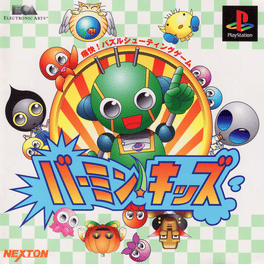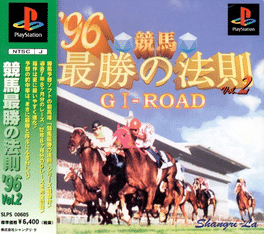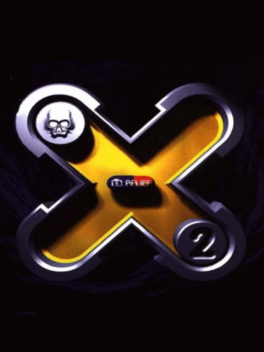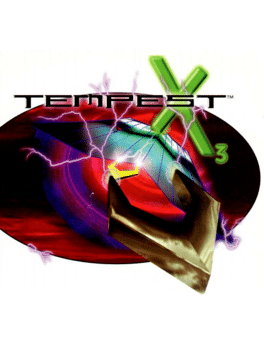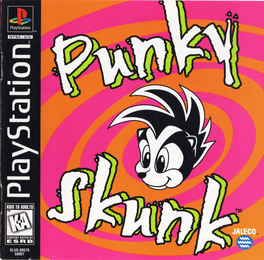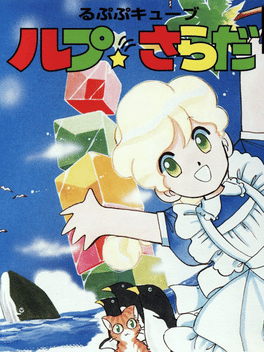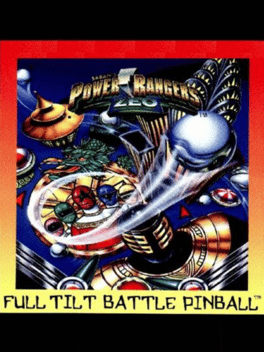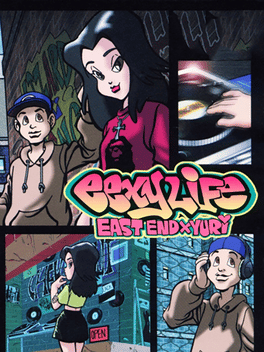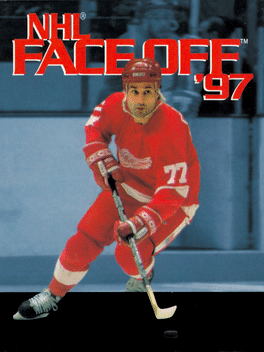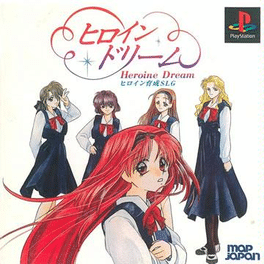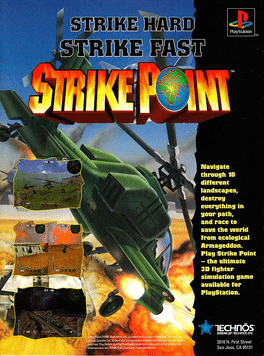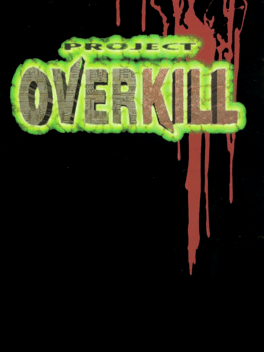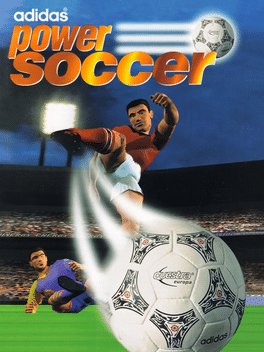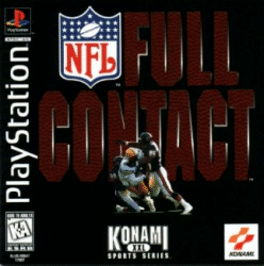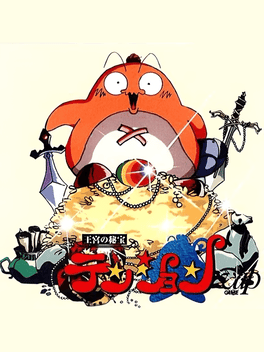New Playstation Games - Page 85
-
Vermin Kids
1996
-
X2
1996
X2
1996
X2, sometimes known as Project X-2 or X2 - No relief is a simple arcade-style side scrolling shoot 'em up released during the Team17-Ocean collaboration era of video games that created the Worms series. It is the sequel to the Amiga 16-bit shooter Project-X. Unlike its predecessor, the game was a console exclusive. A Sega Saturn version of the game was scrapped during development. -
Tempest X3
1996
Tempest X3
1996
star 8In Tempest X3 you control a claw that perches and crawls around the outer edge of a series of geometrically shaped, tube-like constructs, shooting down or out into the nebulous void of outer space. From the core of this void, fuseballs, rockets, pulsars, tankers and other hazardous aliens and alien artifacts move toward your ship. Once you clear a screen, you fly into the void and onto the next level. Watch out for spikes as you advance. -
Punky Skunk
1996
Punky Skunk
1996
Punky Skunk is not your ordinary skunk: he's an extreme-sports loving critter trying to save his friends from a kidnapping wolf named Badler. So begins this adventure of a hip skunk and his 30 levels of platforming action, taking him through the sky, across land, underneath the ground and over water. Multiple paths and bonus levels will offer some variety in this throwback to 2D platform games of the past. In order to succeed, Punky must use various moves to fight enemies, avoid traps and find the flagpole signifying the end of the level. In addition, you'll be able to collect stars and 1-ups for extra lives, green orbs to replenish health, and gear icons outfitting Punky with one of six pieces of equipment: Paraglider, Inline Skates, Skysurfer, Pogo Stick, Jetpack or Diggers. Besides using the gear, Punky can either jump or attack enemies with his "spray." Skunk got you stumped? Not to worry, you can resume progress at the start of each cleared stage if you have a memory card. -
Rupupu Cube: Lup Salad
1996
Rupupu Cube: Lup Salad is a block-pushing puzzle game developed by Fupac for the PlayStation in Japan only until it offered in the US through PSN Import Classic. It has been ported to both the DS and the PSP in Japan as well. The characters were designed by Izumi Takemoto. -
Power Rangers Zeo - Full Tilt Battle Pinball
1996
Earth is under invasion by aliens and the only folks that can stop the madness are the TV heroes known as the Power Rangers. How are they going to do it? Pinball style! You'll find all of the classic pinball bells and whistles here (ramps, spinners, bumpers, targets, flippers, and more), but the action is pure Power Rangers, taking place over five different 3D play fields. Not only that, the game boldly travels to 15 locations around the globe, including New York, Africa, and Japan. Between each level of play, you'll see an awesome animated sequence that advances the storyline to its next phase. Based on what you see in the clips, you'll have to accomplish certain missions in order to advance to the next stage. Though pinball has been around since the early part of the century, it's never been so vast or explosive. The game's makers even worked in such characters as Zeo Zords, King Mondo, and Queen Madrina, just to make things interesting. Whether you're primarily a fan of the Power Rangers, pinball, or PlayStation -
Death Wing
1996
-
NHL Face Off '97
1996
NHL Face Off '97
1996
star 8NHL FACEOFF '97 has all the basic features you've come to expect from a hockey game. All 26 NHL teams from the 1997 season are included, and you'll find all the players as well. The Season mode lets you take a team through a full slate of games while you keep an eye on how the rest of the league is doing. Players can be traded from one team to another, and created as well. This is Sony's first PlayStation hockey series, and graphically it is considered one of the best-looking hockey games ever to appear on the system. You'll find all the action of the real game here, including wicked slap shots, hard body checks, and plenty of fancy skating and stick handling. Up to eight human players can duke it out via a multitap. So if you're looking for a complete hockey simulation, look no further than NHL FACEOFF '97. -
Megatudo 2096
1996
Megatudo 2096
1996
It is the year 2096, and the Megatudo Grand Prix is on! 12 pilots from 12 manufacturers, each with their own unique Maneuver Wear, will fight to win the tournament. Each character has their own set of normal and special attacks, as well as the ability to dash and weave in different directions. -
Heroine Dream
1996
Heroine Dream
1996
Idol simulation game where the player has to train a girl to become Japan's next star idol. -
Supersonic Racers
1996
Supersonic Racers
1996
There are a lot of single player modes, ranging from single one on one races to Knockouts, which consisted of a demolition derby where the winner was the last car still operable. There is also a grand prix mode where the player races in a series of 10 races and required to finish in the top 3 in order to advance to the next. At the end of these 10 races, if a player meets a requirement of points they can then compete in a World Series of Racing to become champion. Eight friends can also go against each other simultaneously utilizing the multi-tap adapter. -
Strike Point
1996
Strike Point
1996
The terrorist organization named Hex has placed deadly ShockWave devices worldwide. If triggered, they will cause total destruction of the ecosystem. You must lead the newly formed StrikePoint helicopter team against the forces of Hex, destroying their strongholds and defusing their tectonic threats. The game contains 10 global hotspots that you can attempt in any order you choose. Each hotspot contains its own set of missions. Some of the missions you will be sent on will involve destruction of enemy aircraft and artillery, ambushing and elimination of enemy convoys, rescuing of ally scientists, and most importantly collecting and defusing all untriggered ShockWave devices. You can choose to fly one of three different types of helicopters to accomplish your goals. -
Project Overkill
1996
Project Overkill
1996
star 5The evil Terracom corporation has struck a deal with alien forces to eradicate populated areas on key planets. This initiative has been named Project Overkill. As one of four mercenaries hired to protect the citizens, you must destroy hordes of alien forces while getting to the root of Terracom's nefarious purposes. Choose from a demolitions expert, a genetic hybrid, an alien weapons specialist, and a special ops assassin. The action is viewed from an isometric perspective, where your objective is to destroy anything and everything that moves. Spanning over 50 levels (including hidden areas), the game will have you infiltrating research buildings, laboratories, and blood-soaked alien territories. -
Adidas Power Soccer
1996
Adidas Power Soccer
1996
star 5.9Adidas Power Soccer kicks its way onto the PlayStation. You are given a wide variety of gameplay options to choose from, such as season and tournament modes, single games, and multiplayer. When going through the season mode, you can play either a shortened season or an official full-length season. Your team, as well as your opponents, are taken from all over Europe and other countries. If you're interested in reaching supreme glory at a quicker pace, there is an option for cup battle. Like it implies, you'll have to beat a certain number of teams in tournament fashion to claim your prize. The game can be played two different ways, arcade or simulation. By choosing the arcade mode, you won't have to worry about soccer physics or penalties whereas the simulation goes by actual soccer rules. If you lay into someone's shin, you'll probably get called for a penalty. Depending on the severity of the penalty, the game will switch to a penalty shot mode, just like real soccer. -
Steel Harbinger
1996
Steel Harbinger
1996
Steel Harbinger is a shooter viewed from a 3/4 perspective, with live action full motion videos used to advance the storyline. Players take on the role of Miranda Bowen, a young woman mutated into a human/alien hybrid, who is humanity's last hope of repelling an alien invasion. -
NFL Full Contact
1996
NFL Full Contact
1996
With action that's even rougher than the XFL (believe it), NFL FULL CONTACT has all of the NFL teams, players, and schedules with an extra dose of aggression. Featuring more than 1,500 motion-captured players and stats based on the 1995 regular season, the game lets you pull from an 80-play offensive book. Play a single game or jump directly to the Playoffs, facing off against a randomly selected bracket of teams. Simple controls allow you to see which buttons will get the ball to which receivers, and four different audibles let you change plays at the last second. A realistic PA announcer adds a touch of stadium ambiance, while a password system ensures that your Playoff progress won't be held up by annoyances like work, school, or dinner. Fully flexible camera angles provide detailed coverage, the defensive AI is high, and the action is truly hard-hitting. If you like your football with a little extra oomph, you've come to the right place. -
Oukyuu no Hihou: Tenshon
1996
Oukyuu no Hihou: Tenshon is a Role-Playing game, developed and published by Vap, which was released in Japan in 1996. -
Silhouette Stories
1996
Silhouette Stories
1996
Have you ever played the classic Taito game Qix or any of the Gals Panic game series? In that case you know what Silhouette Stories is about. The objective is to uncover the silhouette portion of background with a marker until at least 80% of the silhouette is uncovered. When capturing background, only the enclosed area without the stage boss is uncovered, so it is possible to capture 100% of silhouette without capturing the entire background, by limiting boss's movement to an area without silhouette. The plot of Silhouette Stories begins when a young kid finds a strange star that talk to him and start to go with him around the town where they will meet different characters until the puzzle game starts. To advance in the game the player have to solve every silhouette but the difficult part is that there is only one life to do it and limited number of continues, and the silhouette starts from the beginning every time that the player use a continue. The game got lots of humour, nice cartoon graphics, excellent aud
